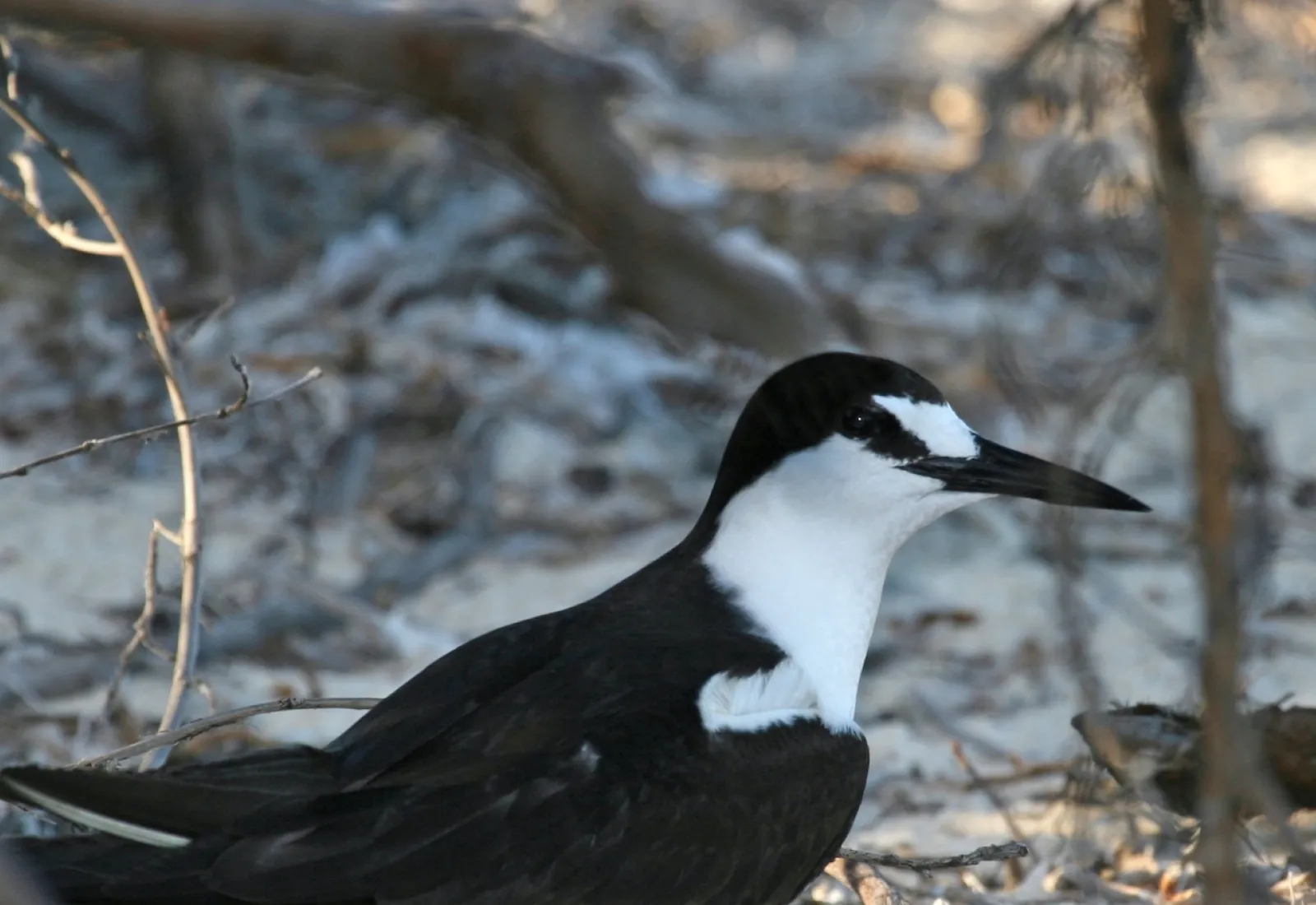Sooty Terns are well known for their long ocean flights and massive breeding colonies. But they are also known for their call. They have a very distinctive call that sounds like the English, “wide awake” and it is loud. The Hawaiian name for this species, ewa ewa means cacophony.
The story of the Sooty Tern is one of being both common and rare depending on what geographic or historical scale you are looking on. Sooty terns are truly pelagic birds. Before they start breeding young birds stay at sea for several years covering tens of thousands of kilometers over the open ocean.
This ability and behavior gives them access to the most remote island breeding sites where they congregate in massive dense colonies. The range of Sooty Terns extends to all tropical oceans and they are said to be the most abundant tropical seabird species (they are classified as different subspecies in different areas). However, in some places, notably the Society Islands, there are only remnant populations left.


As Polynesians voyaged across the Pacific, the Sooty Tern or kaveka, would have played a large role. As the most abundant seabird in Oceania it would have been seen on the open ocean and used as an indicator of fish or land. Then, when Polynesians landed on a new island it would have served as food, in particular the eggs were an important resource.

On Rapa Nui (Easter Island) the kaveka is the species that the famous Birdman ritual is based on.
Sooty Terns nest by the thousands on Motu Nui, part of an isolated rocky outcrop just over a kilometer from the SW shore of Rapa Nui. The Bird Man Competition involved swimming out there and bringing a Sooty Tern egg back to Rapa Nui.



In modern times however world-wide trends show the Sooty Tern population dropping. Like all other ground nesting birds, they are susceptible to human harvesting of eggs and predation by introduced cats, pigs, and rats.
All of that occurred as Polynesians settled islands across French Polynesia and then in modern times turned flat land into coconut plantations. Although there are still healthy populations of Sooty Terns in the Marquesas, they have disappeared from several islands in the Tuamotu Archipelago, and now exist on only two atolls in the Society Islands – Mopelia and Tetiaroa.
So, although these birds have healthy populations on remote islands, in the Society Islands they are relatively rare. Tetiaroa therefore is a critical site for the future of these birds in the region.

On Tetiaroa they can only nest in places where they have open ground and no rats, which means only on Tahuna Iti.
Another similar species the Grey-backed Tern has the same nesting requirements and an even smaller population.


These birds may be the biggest beneficiaries of the upcoming rat eradication since they will be free to move to other open spaces.



